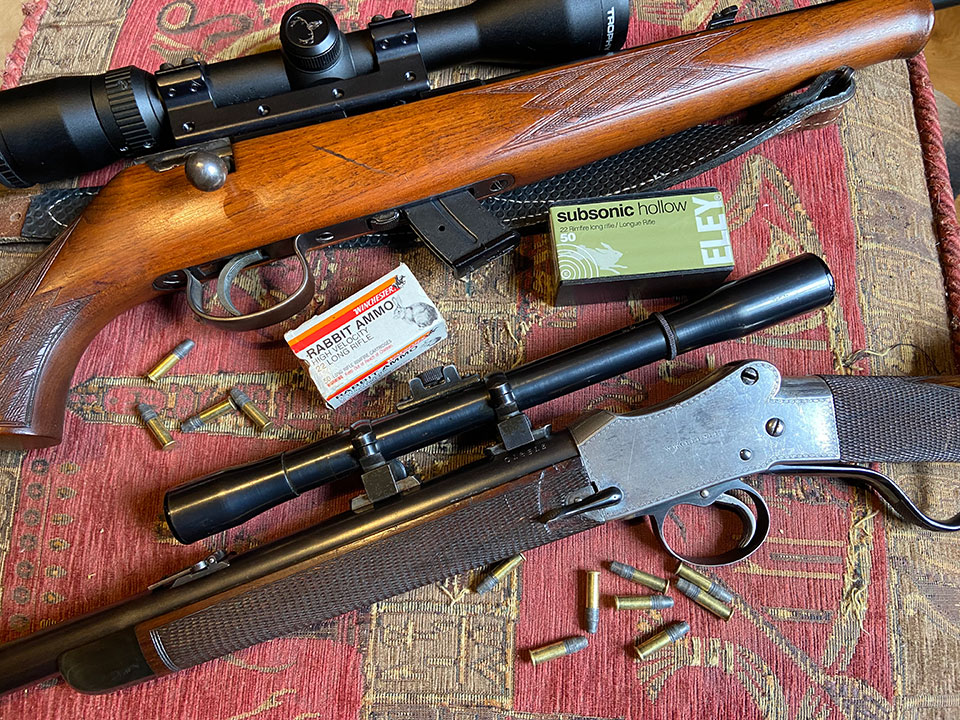The .22 Long Rifle, developed by the Stevens Arms Co. in the United States in 1887, ascended to its place as the favourite rifle of the British vermin controller and recreational shooter in the early years of the 20th century.
In doing so, it replaced the popular small-game-getters; collectively termed ‘rook & rabbit rifles’, made for a variety of low powered, centre-fire cartridges, such as .320 Rook.
The .22 rimfire was accurate, cheap to feed and increasingly available in modern, bolt-action rifles, which were cheaper to buy than the more up-market breech-loading rook & rabbit rifles sold by British makers.
Today, the .22 rimfire is the most popular cartridge in the world. Here in Britain, it is mostly used to fire subsonic hunting rounds through a rifle equipped with a sound moderator, for relatively close range (sub 50-yard) vermin control. It is also very popular for target shooting.

The approaching lead ban includes all rifle ammunition, with no exception for the .22. This is a potential disaster for thousands of gamekeepers, vermin controllers, farmers and sportsmen. BASC has not opposed these proposals, reserving its objections for air rifle pellets, which BASC maintains should remain lead.
The problem is that a 40-grain non-lead .22 bullet would be too long for the chamber of current rim-fires. so, we will be stuck with lighter, faster, noisier, less accurate bullets, all of which break the sound barrier, firing 24-grain zinc-cored copper jacketed bullets.
Another option may be a rifle with a chamber and rifling profile that enables a 40-grain zinc-copper projectile to mimic current .22 subsonic performance.
The rise of the .17HMR showed that a new small vermin cartridge can gain acceptance if it performs well. Would a new sub-sonic round have to be a .22? Perhaps a different calibre would better deliver a 40-grain lead-free projectile. I suspect there are experiments already taking place.
That is of little comfort to current owners of .22 rim-fires, whose least-worst future is likely to involve buying a new rifle. It requires little imagination to predict the effect on the secondhand value of all those .22 rifles currently in service.
Published by Vintage Guns Ltd on




